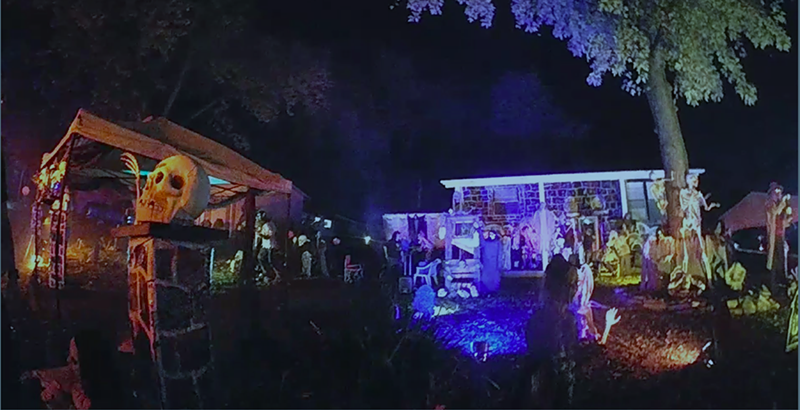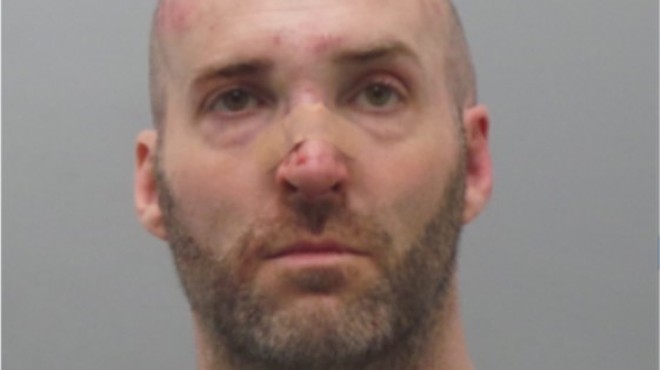
Earlier this week in federal court, Attorney General Andrew Bailey's office filed its response to a lawsuit brought by a Hazelwood man on the sex offender registry who feels he should no longer be compelled to hang a sign on his residence reading "no candy or treats at this residence" every Halloween.
In a lawsuit filed earlier this month, Thomas Sanderson, 58, argued that his being compelled to put up such a sign just because he is a sex offender is tantamount to compelled speech and a violation of his First Amendment rights.
According to his own suit, Sanderson has been hosting a popular Halloween party in Hazelwood for the past two decades, including lavish decorations and more than 100 guests.
Sanderson's party would seem to violate Missouri's law governing the behavior of sex offenders, the Halloween-related provisions of which took effect in 2008. Starting that year, on Halloween sex offenders in the state are required to post the sign as well as avoid all "Halloween-related contact" with minors and stay inside their homes with all the exterior lighting turned off from 5 to 10:30 p.m.
Sanderson, who'd been convicted of statutory sodomy in 2006, was seemingly doing none of those things last Halloween when officers with the Hazelwood Police Department showed up to his party around 5 p.m. and took photos of him handing out candy to trick-or-treaters in front of an elaborate Halloween display that included skeletons, tombstones, police caution tape and spooky-colored lights. The photos taken by the police that evening are included in the attorney general's office's recent filing in the case.
Later that night, the Hazelwood officers went to issue a warning to Sanderson, but didn't find him at his house and spoke to his girlfriend instead. She said Sanderson was no longer on the premises. The officers told the girlfriend that the house needed to be in compliance with the law, which would entail the posting of a sign and the taking down of the exterior lights. The officers said they'd be coming back later in the evening and if Sanderson had failed to comply, he would "face consequences."
About 20 minutes later the officer returned to Sanderson's house to find his decorations still prominently displayed and no sign warning off children. Sanderson's girlfriend continued to insist he wasn't there, however after a few minutes Sanderson revealed himself to be in the Halloween display itself and "apparently intoxicated," wrote Assistant Attorney General Gregory Goodwin.
According to Goodwin's filing, Sanderson was antagonistic to police, blaming his status as a sex offender on “[t]hat 16-year-old bitch girl, little girlfriend of my daughters, that made some allegation.” He then told the officers “go away, go away, bye bye, get a warrant and come back fucker.”
Two days later, Sanderson was charged with failing to comply with Halloween related restrictions for sex offenders, to which he pleaded guilty this April. A judge sentenced him to one year of probation.
Goodwin's filing in court pushes back against Sanderson's assertion that having to hang the sign on his residence is a violation of his First Amendment rights.
"Unsurprisingly…the First Amendment does not grant sex offenders a right to give candy to children on Halloween," he wrote.
Goodwin goes on to argue that the sign isn't compelled speech because it doesn't involve "a particular political or ideological message."
Sanderson's original suit was filed on October 3. But then, a little more than a week later, Sanderson filed a request for a temporary restraining order which, if granted by the judge, would block enforcement of the Halloween-related law immediately while the larger case worked its way through the courts.
In that request, Sanderson's attorney asked for a ruling to be made prior to Halloween, as the law is only applicable that one night every year.
In filings on behalf of the Attorney General's Office, Goodwin takes Sanderson to task for waiting until less than a month before Halloween to file that request, as well as for failing to raise any First Amendment qualms in between his being charged in St. Louis County Circuit Court last November and pleading guilty five months later.
Sanderson is represented in his suit by Matthew D. Fry of noted Clayton firm Rosenblum, Schwartz, Fry & Johnson as well as Janice Bellucci, an attorney out of Sacramento who is the executive director of the Alliance for Constitutional Sex Offense Laws.
We welcome tips and feedback. Email the author at [email protected]
or follow on Twitter at @RyanWKrull.
Subscribe to Riverfront Times newsletters.
Follow us: Apple News | Google News | NewsBreak | Reddit | Instagram | Facebook | Twitter | Or sign up for our RSS Feed









